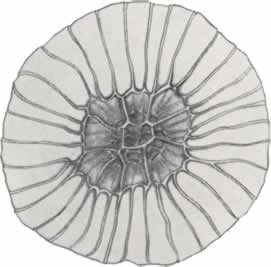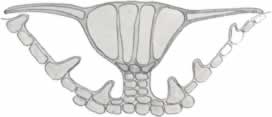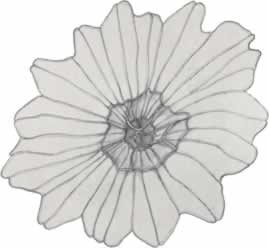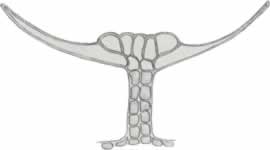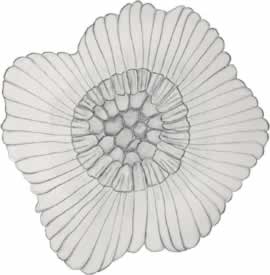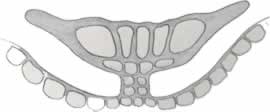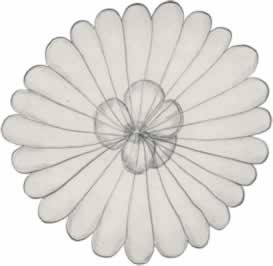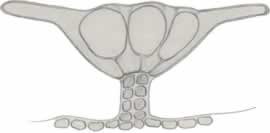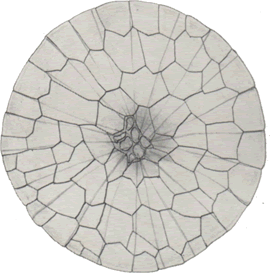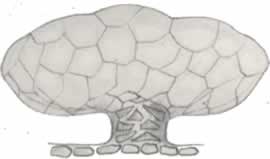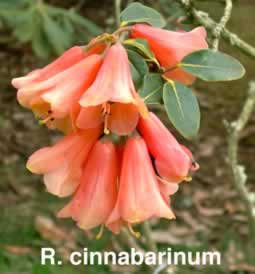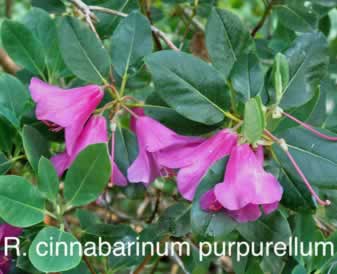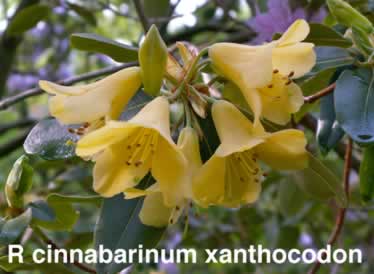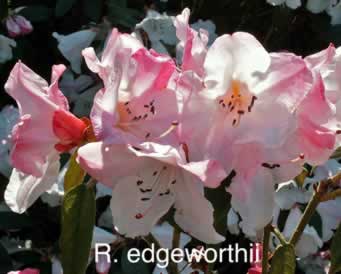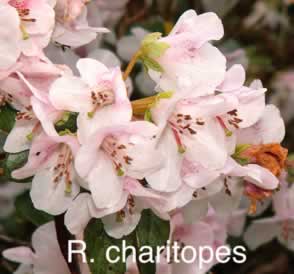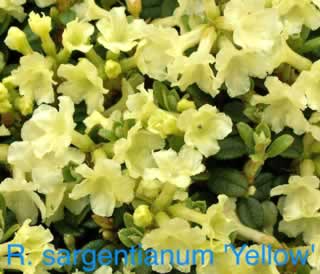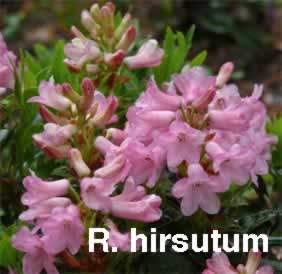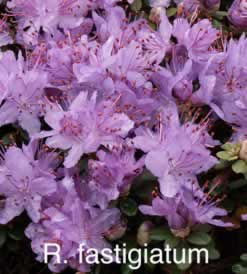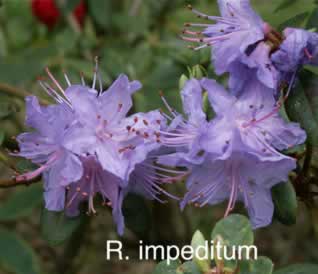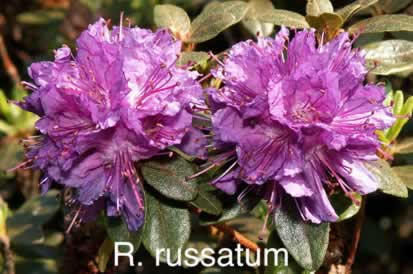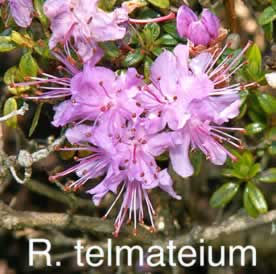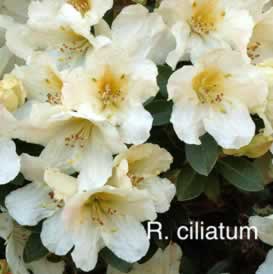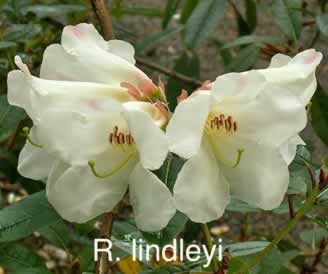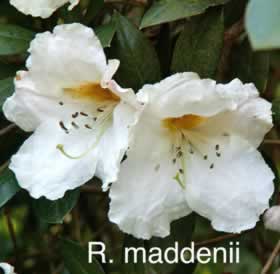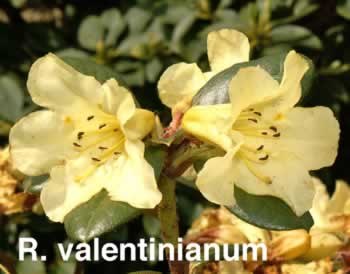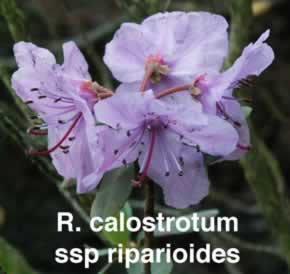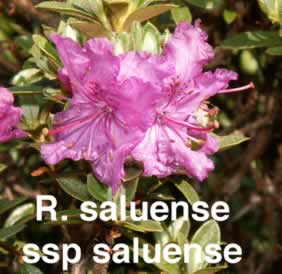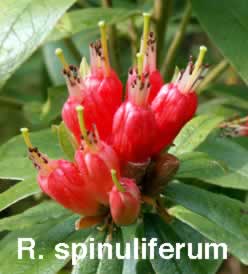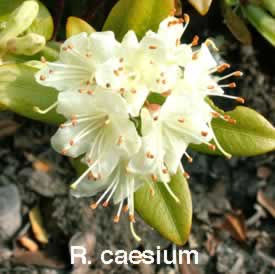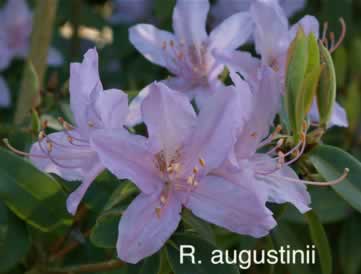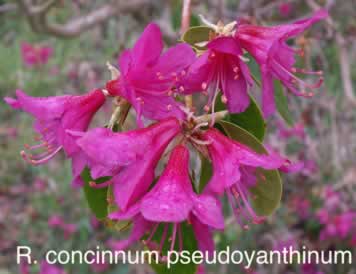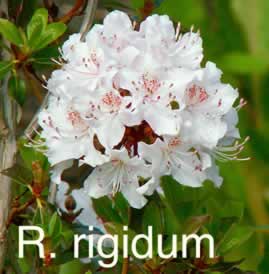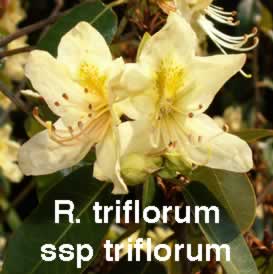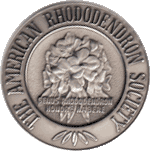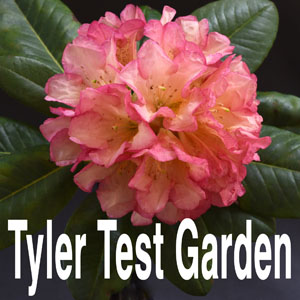
Lepidote Rhododendrons
Lepidotes
The lepidote species are characterized by the presence of scales on various parts of the plant, most obviously on the undersides of the leaves. They are generally the small-leaved species. Most lepidotes are evergreen, but some are semi-deciduous, meaning they may be deciduous in colder climates or before spring.
The lepidote rhododendrons are the most numerous group in the genus, with over 500 species at present recognized (though over half of these belong to the mainly Malesian section Vireya). They also have the widest ecological and geographical range. All epiphytic species are lepidote, but so too are virtually all the alpines; the northernmost rhododendron, R. lapponicum, and the southernmost, the Australian R. lochae, are both lepidote. They are sparingly represented in North America and western Eurasia, but in Sino-Himalaya they are very numerous and are the only type of rhododendron found in the Malesian region, apart from a few exceptions. It is the lepidote species R. ferrugineum, the alpine rose, that botanists use to anchor or centralize the defining features of the genus Rhododendron.
The Vireya tropical rhododendrons have scales, hence they are lepidote rhododendrons. For the purpose of this website, the vireyas will be treated separately since they are very different from most other lepidotes. However, some other lepidotes are tender and epiphytic. The properties of epiphytic species is discussed in more detail in the section on Vireyas.
Lepidotes
| Subgenus |
Members |
| Rhododendron |
154 lepidotes
319 vireyas |
Return to Top
Scales
The scales that distinguish lepidotes are very tiny, microscopic mushroom shaped glandular structures appearing on leaves and other plant parts. Rhododendrons with scales are defined as lepidotes as opposed to elepidotes, which don't have scales. Many plants with scales do not have hairs or indumentum. Some lepidotes, such as R. edgeworthii, also have indumentum (hairs), which may obscure the scales leading them to be mistaken for elepidotes occasionally. Technically, botanists consider scales as a type of trichome, as are the various types of indumentum.
The scales that characterize the lepidote species are really glandular hairs of complex structure, consisting of a very short stalk surmounted by a multicellular head, which is usually surrounded by a rim made up of radially arranged cells, the whole scale, seen from above under low magnification, having the appearance of a shield with a central boss or umbo. The edge of the shield may be entire, crenated, or sometimes (as in s. Anthopogon) deeply incised. Rarely, as in s. Trichocladum, the rim is absent. These elaborate glandular hairs take the place of the simple glandular hairs found in other types of rhododendron, but never among the lepidote species. In addition to scales, the lepidote species also frequently bear eglandular hairs, but these are always simple; the branched hairs so frequent among the Hymenanthes rhododendrons are unknown among the lepidotes. The Edgeworthii series, which is unusual among the lepidotes in having a dense indumentum, is no exception to this rule, since the covering is made up of simple hairs.
It has been found that the presence of scales is, at least in the species examined, almost perfectly correlated with another character, namely, that the leaves are convolute in the bud, i.e., folded forward, whereas in all other groups of Rhododendron they are revolute, the margins being folded back so as to conceal most of the undersurface (J. Sinclair, Notes Roy. Bot. Gard. Edin., Vol. 19 (1937), pp. 267-71).
Botanists have classified scales into 5 different types based upon the shape of the top. They are approximately .01" or about 3 times the size of a human hair. The following diagrams are the top view and side view. As you can see, the side view is similar to that of a mushroom.
Entire Scales: most lepidote rhododendrons and Vireyas have entire scales.
Lancerate Scales: Members of the Pogoanthym Subsection. (R. sargentianum)
Undulate Scales: Members of the Lapponica Subsection and Vaccinioides Series. (R. fastigiatum, impeditum, russatum, telmateium & vaccinioides)
Crenulate Scales: Members of the Saluenensia Subsection. (R. calostrotum & saluenense)
Vesicular Scales: Members of the Trichoclada Subsection. (R. caesium)
Return to Top
Map of SE Asian Native Habitats of Lepidote Rhododendrons
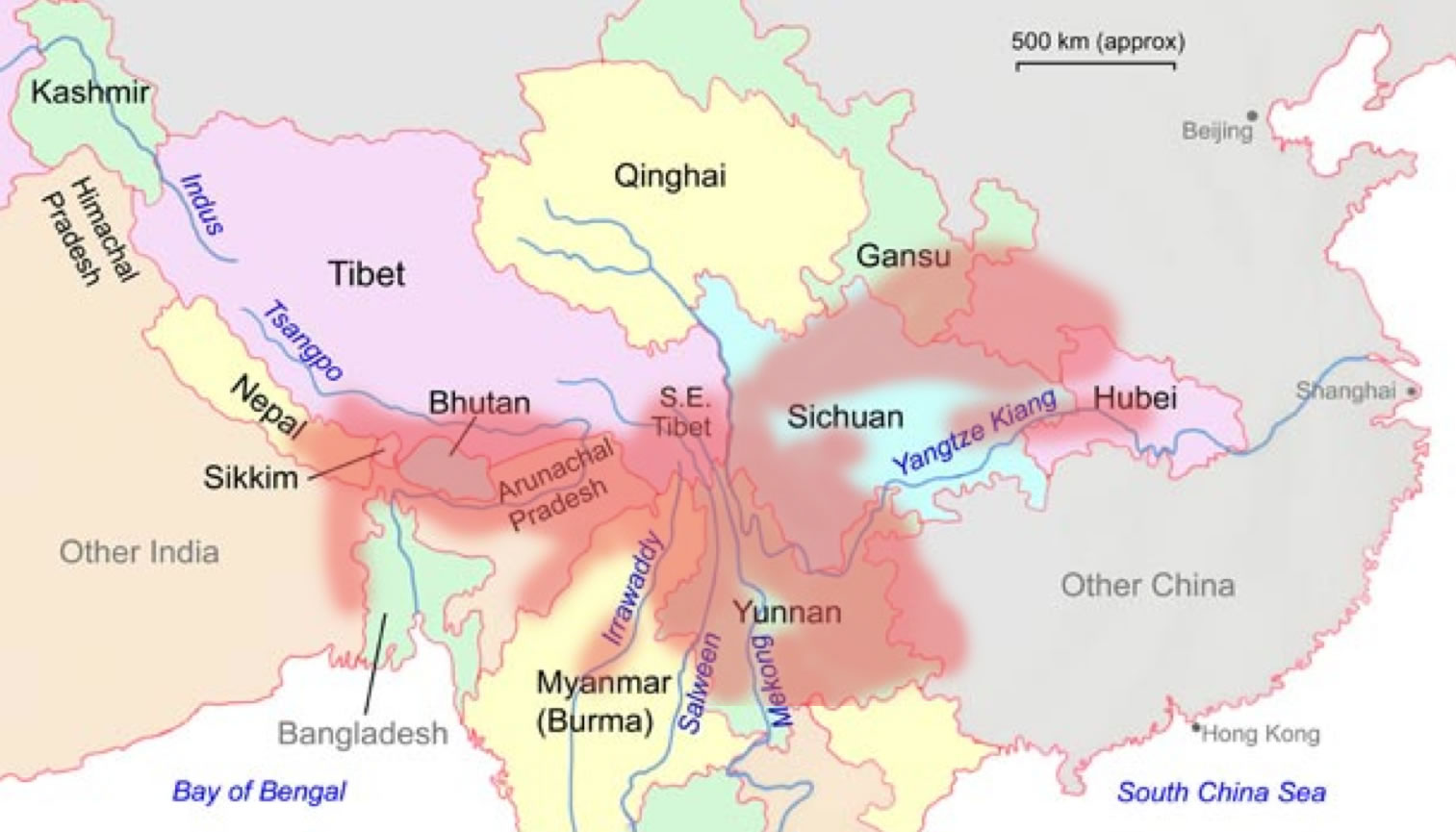
Aside from the vireyas, most lepidote rhododendrons occur in mountainous regions across eastern and southeastern Asia (shown above) and also R. hirsutum, R. ferrugineum, and R. myrtifolium in southern Europe, and R. neoglandulosum in northwester North America and R. minus in the Appalachian Mountains. An interesting lepidote in the subgenus Rhododendron is Rhododendron lapponicum, which has a circumpolar distribution extending from Lapland across Siberia to northern Canada and into the northern USA. There are also the Labrador teas (R. groenlandicum and R. glandulosum), which are sometimes classified as the genus Ledum and are found from the northern US, through Canada, and into Greenland. Some lepidotes from mountain forests are epiphytic, which means the grow in mossy areas on the higher parts of trees or in mossy areas on rocks.
Return to Top
Examples of Lepidote Rhododendron
Species
Subsection Cinnabarina - R. cinnabarinum, R. cinnabarinum purpurellum and R. cinnabarinum ssp. xanthocodon
Subsection Edgeworthia - R. edgeworthii
Subsection Glauca - R. charitopes
Subsection Pogoanthym - R. sargentianum
Subsection Rhododendron - R. hirsutum
Subsection Lapponica - R. fastigiatum, R. impeditum, R. russatum and R. telmateium
Subsection Maddenia - R. ciliatum, R. lindleyi, R. maddenii and R. valentinianum
Subsection Saluenensia - R. calostrotum ssp. riparioides and R. saluenense ssp. saluenense
Subsection Scabrifolia - R. spinuliferum
Subsection Trichoclada - R. caesium
Subsection Trifolia - R. augustinii ssp. augustinii, R. concinnum pseudoyanthinum, R. rigidum and R. triflorum ssp. triflorum
Return to Top
Subsection Cinnabarina
Subsection Cinnabarina contains some of the most attractive pendulous flowers in shades of reddish purple, orange, salmon and yellow.
R. cinnabarinum – 3', +5F. It has a natural range of colors from red to yellow. It is native from E Nepal through Bhutan to SE Tibet from 7,000 to 13,000 ft.
R. cinnabarinum purpurellum – 3', +5F. It is actually part of the xanthocodon subspecies. See its description next.
R. cinnabarinum ssp. xanthocodon – 3', +5F. It ranges from yellow to orange to purple. It is native from Arunachal Pradesh through Bhutan to S. Tibet from 10,0000 to 14,000 ft. [Return to Lepidote Rhododendron Species Index]
Subsections Edgeworthia, Glauca, Pogoanthym and Rhododendron
Subsection Edgeworthia is characterized by very hairy leaf undersides. They are epiphytes.
R. edgeworthii – 4', 0F. It is semi-dwarf. It is native over a wide area from Sikkim, W Bengal, Arunachal Pradesh & Bhutan to E Burma and Yunnan & S Tibet. Found from 6,000 to 13,000 ft.
Subsection Glauca has bell-shaped flowers in yellow, white, pink and purple. The foliage is aromatic. They are very tender.
R. charitopes – 1', 0F. It is low growing with apple-blossom pink flowers. Charitopes is native to a small area of Upper Burma and adjacent N Yunnan from 10,500 to 14,000 ft.
Section Pogonanthym has flowers with distinctive daphne-like flowers and aromatic foliage. They are difficult to hybridize outside their section.
R. sargentianum ‘Yellow' – 1', -5F. It is a heavy blooming dwarf species for the rock garden or other sunny locations. It is native only to central Sichuan where it occurs from 10,000 to 14,000 ft. on cliffs and rocks. Has not been collected in the wild since 1904!
Subsection Rhododendron is a group of low-growing European natives. They tend to be hardy and late flowering. They were the first rhododendrons cultivated in European gardens but are not easily grown. Other members include R. ferrugineum and R. myrtifolium.
R. hirsutum – 2', -10F. It is a hardy alpine species with hairy foliage. Flowers are in shades of pink or white. It is native limestone soils in mountain terrain limestone areas in the Alps of S Europe from 1,200 to 6,000 ft. [Return to Lepidote Rhododendron Species Index]
Subsection Lapponica
Subsection Lapponica is a group of low plants with small leaves and flowers in the purple-blue range. Some are fairly hardy. R. fastigiatum and R. impeditum are among of the hardiest of the group, hardy to -10F. They are both dwarf.
R. fastigiatum – 2', -15F. It is very floriferous and relatively easy to grow if provided with good drainage and full sun. It is one of the best lapponicas for all-around garden use. R. fastigiatum is found in open areas of N, NE, & C Yunnan.
R. impeditum – 1', -15F. It is one of the more adaptable and hardy of the “alpine” species and is excellent for the rock garden. It is common in various sub-alpine and alpine habitats. It is found in N Yunnan and SW Sichuan in various sub-alpine and alpine habitats.
R. russatum – 3', -10F. It is a semi-dwarf with shades of blue-purple, purple, lavender and reddish purple. It is found in N & NW Yunnan to SW Sichuan from 11,000 ft. to 14,000 ft.
R. telmateium – 1', -10F. It is very dwarf member of the lapponica Subsection. It is rare in cultivation. It is native to various alpine habitats from 9,500 to 16,000 ft. in N Yunnan and adjacent SW Sichuan. [Return to Lepidote Rhododendron Species Index]
Subsection Maddenia is mostly fragrant and tender plants that can grow fairly tall. They are epiphytic plants.
R. ciliatum – 3', +5F. It is a parent of Dora Amateis and other dwarf hybrids. R. ciliatum is native to E Nepal, Sikkim, Bhutan, S Tibet from 8,000 to 13,000 ft.
R. lindleyi – 5', +20F. It is large and fragrant. They vary from pure white to pink. They are rated by many as having the most beautiful flowers in the genus. Lindleyi occurs as an epiphyte or on cliffs from E Nepal to SE Tibet from 6,000 to 11,000 ft.
R. maddenii – 4', +10F. It grows up to 30 ft. tall. It has large fragrant flowers that are extremely variable, usually white. R. maddenii is native to W Arunachal Pradesh, Bhutan, and Sikkim from 5,000 to 12,000 ft.
R. valentinianum – 2', +10F. It has yellow flowers on a tender shrub. Valentinianum is found growing on cliffs and stony slopes from 9,000 to 12,000 ft. NE Burma & Yunnan Frontier. [Return to Lepidote Rhododendron Species Index]
Subsections Saluenensia, Scabrifolia and Trichoclada
Subsection Saluenensia is prostrate plant with purple, pink or reddish flowers.
R. calostrotum ssp. riparioides – 2', 0F. It has blue-green leaves and larger flowers that are generally more purple or blue-purple than reddish purple. Calostrotum ssp. riparioides is only known from a small area of W Yunnan near Weixi where it grows on alpine slopes and cliffs from 12,000 to 13,500 ft.
R. saluenense ssp. saluenense – 2', -50F. It is tolerant of sun but requires excellent drainage. It is native to SE Tibet, NE Burma and NW Yunnan, China where they occur from 11,000 to 14,000 ft. in various alpine habitats.
Subsection Scabrifolia has clusters of pink to reddish flowers growing from axillary buds.
R. spinuliferum – 4', +5F. It is an upright plant with attractive leaves with prominent veining. However, it is best known for its strange upright tubular flowers. They range in color from pink to crimson with protruding stamens and style. Spinuliferum is native to Yunnan and S Sichuan where it occurs in dry pine forests and thickets from 5,500 to 8,500 ft.
Subsection Trichoclada is a group of yellow-flowered species. Some are deciduous and flower on bare stems.
R. caesium – 3', 0F. It is semi-evergreen and tender. It is compact and has aromatic foliage. Caesium is native to the western Yunnan where it occurs from 8,000 to 10,000 ft. on rocky slopes. [Return to Lepidote Rhododendron Species Index]
Subsection Trifolia
Subsection Trifolia is a group of vigorous plants.
R. augustinii ssp. augustinii – 6', 0F. It is well known for its blue forms, which are quite spectacular. Augustinii ssp. augustinii is native to China (Hubei & Sichuan) in various open situations from 4,000 to 11,000 ft.
R. concinnum pseudoyanthinum – 5', -5F. It has ruby red flowers. It is native from W Sichuan into C China.
R. rigidum – 6', 0F. It has flowers that are white to rose-lavender. Rigidum is native to N Yunnan and S Sichuan, China where it occurs in a wide variety of habitats from 2,500 to 11,000 ft.
R. triflorum ssp. triflorum – 6', +5F. It has flowers that are cream to various shades of yellow, with greenish spots. It has attractive peeling bark. Triflorum ssp. triflorum is native in the eastern Himalayas from E Nepal into the N Burma/SE Tibet frontier. It occurs in a wide variety of habitats from 7,000 to 13,000 ft. [Return to Lepidote Rhododendron Species Index]
[Return to Top]
How
To Grow Rhododendron Species
Rhododendrons grow best in partial shade, since full sunlight tends to bleach the flowers. They need an acid soil with a pH of 5.0 to 6.0, well mulched with organic material. Mix garden loam with equal parts of coarse sand and ground bark or oak leaves before planting. Soil around the rhododendrons' shallow roots must be kept cool and moist but well drained. All except leather-leaf rhododendrons transplant well in the spring, or in the fall if mild winter weather does not damage the shallow-rooted plants. Do not fertilize at the time of planting, as this might injure the roots, but water deeply. Supplemental feeding later is not normally needed, but if a plant appears pale or droopy, apply cottonseed meal or a fertilizer for acid-loving plants around its base in early spring. A year-round mulch of rotted oak leaves will also provide natural nutrients and will help keep the soil cool and moist.
Prune rhododendrons after the flowers have faded to induce new growth. Most evergreen rhododendrons may be propagated from stem cuttings of new growth taken in late summer and rooted in a mixture of perlite or vermiculite and peat moss. Deciduous rhododendrons are propagated by seed, grafting or cuttings. For deciduous azaleas, cuttings may need bottom warmth of 75° and artificial light to promote root growth.
Do not cultivate around the shallow roots of rhododendrons and azaleas, but pinch off their faded flowers to improve bloom the following year. Also, prune out dead, diseased or damaged branches, and cut old branches back to the soil level to encourage new growth.
Return to Top
| 

